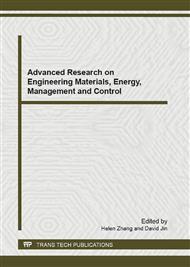p.1144
p.1151
p.1155
p.1159
p.1164
p.1170
p.1174
p.1179
p.1187
DNA Addition Algorithm Based on Molecular Beacon
Abstract:
A new DNA computing model to realize binary integer additions based on molecular beacon is described in this paper. The binary 0 and 1 are represented by two different fluorescent states of a molecular beacon since its two different structures. By designing sequences of molecular beacons skillfully, and using the relationship between each two corresponding bits and their result and carry bit of two operational numbers, the computing process to compute each two corresponding bits of the binary numbers is simulated in the test tube. Finally, the results can be read only by detecting whether the fluorescence in tube emits. The result of the experiment shows that the algorithm is simple and convenient, and the algorithm provides a new idea for DNA computing to realize arithmetic operations
Info:
Periodical:
Pages:
1164-1169
Citation:
Online since:
January 2012
Authors:
Keywords:
Price:
Сopyright:
© 2012 Trans Tech Publications Ltd. All Rights Reserved
Share:
Citation:


